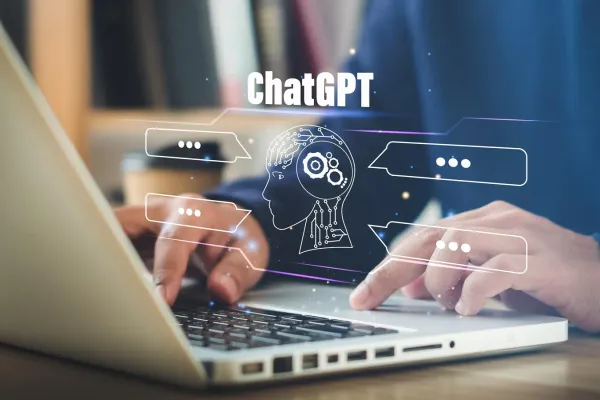What Can Liberal arts Majors Do in an AI Team?

Over the past half year, most of the AI teams reported in the market consist of core talents with technical backgrounds, at least from STEM fields. In many AI communities, technically proficient developers are often more welcomed. As a graduate of the Chinese department, I have been wondering: is there no place for liberal arts majors in the AI field?

After working in AI for three months, the internal AI tool I participated in developing finally made some progress. Reflecting on these three months, I found some roles that liberal arts majors can play in an AI team.
Here’s a brief summary:
- Developing internal AI products has at least three milestones:
- Identifying high-value scenarios where AI can help.
- Developing user-friendly AI tools to solve problems.
- Helping front-line employees effectively use these tools.
In each milestone, I, as a liberal arts major, contributed by:
- Identifying scenarios: Researching and educating about AI applications in the industry.
- Product development: Incorporating expert knowledge into the product through prompts.
- User success: Assisting seed users in achieving success in real business applications.
If you're interested in the details, here’s more information:
Identifying High-Value AI Scenarios
- Finding high-value scenarios
- "Collaborate with industry experts to identify high-value scenarios and develop AIGC solutions for them, which can be more profitable." This idea, once shared, received affirmation from several industry leaders. The AI tool I later participated in was developed under this approach.
- Tasks beyond technology
- To "collaborate with industry experts to identify high-value scenarios," an AI team cannot rely solely on technical expertise. We need to spend more time communicating with experts, understanding the knowledge and business models of the field, and identifying the core strengths of the companies we serve. Similar to how a truck driver needs to know more than just the mechanics of an engine to make money; they need to understand what cargo is most profitable and which routes are best.
- What a Liberal arts major can do
- For most industry experts, the current state of AI is a mystery. News fluctuates between AI replacing jobs and AI hitting a cooling period with many AI companies folding, leaving uncertainty. So, I stepped in, conducting detailed research and explaining the actual state of AI and its real impact on the industry in terms that experts could understand. Once they grasped what AI can and cannot do, I worked with them to test AI’s effectiveness in solving real business problems.
Overall, experts prefer business-oriented, specialized research reports, tested and proven SOPs, and customer/user data. They have less interest in the typical tech/product-focused articles and soft advertisements.
Developing Simple and Effective AI Tools
In late May, Andrej Karpathy, one of OpenAI’s founders, mentioned at Microsoft Build 2023 that "many tasks can be accomplished directly with prompts. Before hitting the prompt ceiling, there's no need to consider model fine-tuning." In real business, many issues can indeed be solved through prompts. The prompt ceiling depends on the importance of the business scenario and the expertise of the specialists involved.
If a high-value business scenario is identified, the focus shifts to "how to enhance the prompt ceiling with experts." From my experience, many AI engineers dismiss the importance of learning prompts, and most industry experts are not skilled in prompts. This gap needs to be filled by someone like me who is willing to learn and is good at teaching prompts.
- Ensuring AI tools are user-friendly
- After three months in the field, I increasingly agree with the statement, "As long as two people in the company know how to use prompts, it's enough." Creating prompts that genuinely solve business problems requires extensive business knowledge, prompt engineering skills, and continuous trial and error. The learning and trial costs are far beyond what front-line business partners can afford. We cannot expect them to use it effectively through a few training sessions. A more feasible approach is to have prompt experts (like me) collaborate with business experts interested in AI. Together, we pre-write and package the prompts needed for high-frequency, efficiency-enhancing scenarios. The final product delivered to front-line partners should be a simple tool that requires minimal effort to achieve consistent results.
Helping Front-Line Partners Use AI Effectively
Even tools as simple as those on Facebook require specific training for use in private domain operations.
- AI is harder to promote than digital tools
- For front-line partners, AI is not just a new efficiency tool; they have subconscious fears of being replaced. Those who have tried some AI tools and faced obstacles are not necessarily convinced that a new AI tool will work. Under such circumstances, attracting a certain number of seed users, getting them to quickly adopt the tool, and ensuring they see results and continue using it is challenging.
- Effective internet-era operational methodologies
- For example, focus on breaking through with interested business teams by delving into their specific projects and using AI tools to improve efficiency point-by-point. Once the tool proves effective in their business, the team will continue using it. During this process, I can continuously summarize their pain points, identify high-frequency, specific scenarios in real business, and estimate efficiency gains (e.g., reducing a 3-day task to 10 minutes). This way, other business teams can genuinely see the benefits of AI tools, gradually expanding their use.
Other Considerations
- Focus on “high-value scenarios”
- Ultimately, the key is not the research and education phase, the prompt engineering in product development, or the product operations in user success, but finding the "high-value scenarios" in the industry. To find these scenarios, AI teams must collaborate with industry experts and deeply understand the technological progress and product performance in the field. This is where liberal arts majors can create significant value.
- The distinction between liberal arts and STEM is not crucial
- With AI support, the distinction between liberal arts and STEM is less important. With dedication, many technical and industry-specific issues can be learned. For instance, many people in the community have successfully run web crawlers using ChatGPT and Colab without needing any plugins or downloading Python. From a collaboration perspective, these issues don’t need to be mastered to a high level. After receiving a request, knowing whether it’s technically feasible and understanding how it can be applied in business is usually enough. Identifying those high-value scenarios might require a deep understanding of the business and the market dynamics. I hope to spend less time worrying about my major or job title in the future and more time leveraging my strengths and using AI to create greater value for customers/users, focusing on understanding the needs of clients/users in specific fields.



